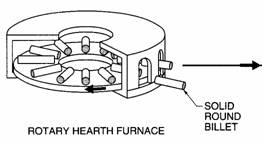Heating Classification
The process heating industry utilizes heating equipment so that they can heat materials in a controlled manner. A wide variety of these exist and they are often used in combination with each other so as to improve performance and increase efficiency. Before heating equipment are discussed in detail, it must be mentioned that a single product can serve a variety of applications. Similarly, in a specific application, several types of heating equipment can be utilized.
As an example, a company located in Alabama used direct fired batch furnace used for curing coatings on metallic parts. It was also used to heat glass products at a glassware facility. The two applications are very different, but single heating equipment fulfills the requirements of both. For the coatings application, the continuous type furnace can also be used. Thus, even though the types differ for a single application, both of them suffice the needs.
The classification of process heating equipment can be made on several bases.
Mode of Operation
When providing heat to the material, it is either continuously transferred through the heating equipment or is fixed at a place and heated at that same position. The former of these is referred to as continuous mode and the latter is termed as batch mode. In continuous mode, the substance to be heated is moved throughout the furnace. In every region or zone of the furnace, different process heating steps are performed. The zones differ from each other in temperatures, are maintained under different conditions, release unwanted by-products from the system and allow the required chemicals to enter into it.
A continuous furnace can operate continuously without any interruptions provided that the required materials are constantly provided to it. In batch mode, all the steps are conducted at one fixed location and the entire material is heated in a single batch only.
Material Handling System
The choice of a suitable material handling system is dependent on the material properties, the heating method being utilized, the chosen mode of operation and the energy being used. Fluid heating systems, car bottom furnaces and walking beam furnaces are examples of a material handling system. A rotary hearth furnace is also included in this category, and is shown in the figure below.

The two main heating methods are direct and indirect. In the former of these, the material to be heated is directly exposed to the source or the burned products. The heating elements used for this are burners or electrical components. On the other hand, the indirect heating method separate the source and the material, and use an additional medium for transferring heat energy between the two. The heating elements used in this case are usually burner tubes. For some specific applications, covered electrical elements may also be used.
Type of Energy Used
The type of energy utilized in a heater is related to the equipment type. For furnaces that use gas, liquid or fuel burners, the energy is derived from combustion processes. In the case of electrical heating systems, energy is generated through a boiler or a generator.
